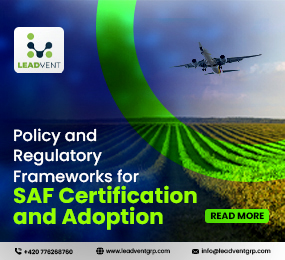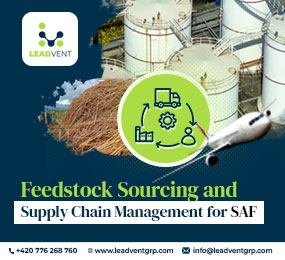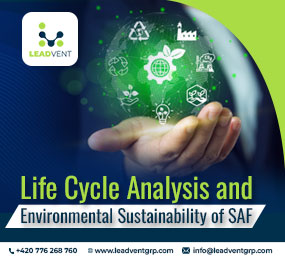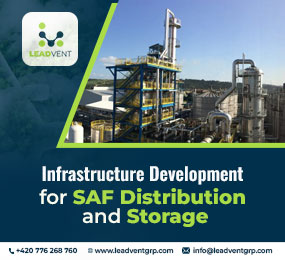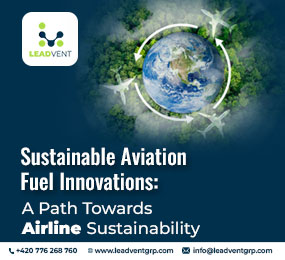The aviation industry accounts for about 2.5% of global CO2 emissions. With rising pressure to meet decarbonization goals and cut aviation carbon, a groundbreaking solution has emerged—Sustainable Aviation Fuel (SAF). SAF can significantly lower emissions without needing major changes to aircraft or airports. But how is SAF made, and what are the latest advancements in this technology?
This blog explores the production methods and key processes behind SAF while discussing its role in creating a greener aviation future. We'll also highlight an industry event where experts discuss innovations in sustainable fuel.
What is Sustainable Aviation Fuel?
Sustainable Aviation Fuel (SAF) is a biofuel or synthetic fuel made from renewable resources like waste oils, agricultural residues, and algae. Unlike traditional jet fuel, SAF can cut lifecycle carbon emissions by up to 80%, depending on its production. SAF plays a key role in aviation's fight against climate change, with airlines aiming for net-zero emissions by 2050. It's compatible with existing aircraft and infrastructure, making it a practical and immediate solution for reducing aviation carbon.
Why Does SAF Matter?
1. Environmental Impact
Transitioning to SAF is vital for addressing climate change. By reducing lifecycle emissions from fossil fuels with sustainable feedstocks, SAF helps decrease the aviation industry's global carbon footprint.
2. Regulatory Compliance
Governments and regulatory bodies increasingly demand stricter carbon reduction targets. SAF adoption positions airlines and fuel suppliers to meet these requirements efficiently.
3. Economic Opportunities
The SAF sector represents an emerging market valued at $776 million in 2022, with exponential growth expected in the coming years. Investment in SAF production technologies ensures long-term gains and sustainability.
Technologies and Processes Behind Sustainable Aviation Fuel
Advanced technologies are driving SAF production, ensuring scalability and efficiency. These are some of the most prominent SAF production pathways:
1. HEFA (Hydroprocessed Esters and Fatty Acids)
HEFA is currently the most widely adopted SAF production method. It uses waste fats, oils, and greases to create a chemically identical substitute for traditional jet fuel. The process delivers high-quality fuel but may face feedstock limitations as demand increases.
2. Fischer-Tropsch (FT) Process
This process converts syn-gas (derived from biomass or municipal waste) into synthetic hydrocarbons. Fischer-Tropsch fuels, certified for aviation use, offer scalability by utilizing non-edible feedstock, enabling greater sustainability.
3. Alcohol-to-Jet (ATJ) Process
ATJ involves converting ethanol or other alcohols, such as butanol, into aviation fuel. With ongoing focus on second-generation biofuels, ATJ technology can bridge the gap between renewable energy sources and aviation.
4. Power-to-Liquid (PtL) Technology
Using renewable electricity, PtL synthesizes liquid hydrocarbons via hydrogen and captured CO2. Although it remains in early-stage adoption, this innovative method promises potentially zero-carbon emissions, making it one of the most sustainable paths forward.
5. Bio-Oils and Advanced Feedstocks
Efforts are underway to diversify SAF feedstocks further, including microalgae and carbon-rich agricultural residues, to reduce reliance on finite raw materials like waste oils.
Case Study – The HEFA Success Story
Airline XYZ recently introduced SAF derived from HEFA technologies on a major route in Europe. Results showed an 18% reduction in emissions per passenger, providing a measurable impact that reinforces the sector’s viability.
Challenges in Scaling SAF Production
- High production costs compared to conventional jet fuel
- Limited availability of feedstock
- Regulatory and policy gaps hindering adoption
Addressing these challenges requires collective investment, innovation, and support from stakeholders across the aviation sector.
SAF Applications in Various Business Functions
Sustainable Aviation Fuel serves more than just environmental purposes; it is reshaping operations for airlines, airports, and energy stakeholders.
1. Carbon Offsetting for Airlines
Airlines are diversifying their decarbonization strategies by gradually integrating SAF into operations. Programs incentivize frequent fliers and businesses to participate actively in sustainability missions.
2. Green Marketing Strategies
Companies adopting SAF use bold environmental claims to build consumer trust and enhance their brand image. Marketing campaigns backed by real data on emissions reductions appeal to increasingly eco-conscious audiences.
3. Supply Chain Collaboration
Airports, energy suppliers, and logistics providers work hand-in-hand to create end-to-end supply chains that accommodate SAF storage, blending, and distribution seamlessly.
Frequently Asked Questions (FAQs)
Q1. Is SAF ready for mass adoption across airlines?
While SAF is certified for use, key hurdles such as production costs and scalability must be addressed for broader adoption.
Q2. How does SAF compare to traditional jet fuel in terms of performance?
SAF delivers identical performance metrics while substantially reducing greenhouse gas emissions.
Q3. What is the potential emission reduction for an airline using SAF?
Lifecycle emissions can be reduced by 50%–80% depending on the feedstock and production process.
Q4. How can stakeholders contribute to scaling SAF?
Innovation grants, public-private partnerships, and active participation in forums like the World Sustainable Aviation Fuel Forum are vital.
Q5. Are there any SAF mandates globally?
Some regions, including the EU, are working on regulations to mandate SAF blending quotas in aviation fuels.
Looking Ahead at the World Sustainable Aviation Fuel Forum
While SAF technology is advancing rapidly, industry collaboration is key to overcoming challenges and scaling adoption effectively. Events like the Sustainable Aviation Fuel Conference offer invaluable opportunities to connect with leaders and innovators shaping the future of SAF.
Why Attend?
- Expert Insights - Learn from industry pioneers tackling challenges like feedstock limitations and policy creation.
- Networking Opportunities - Meet executives, policymakers, and innovators driving change.
- Cutting-Edge Technologies - Explore the latest SAF processes through live demos and presentations.
Organized by Leadvent Group, the upcoming event will also highlight green hydrogen, decarbonization strategies, and integration with SAF technologies. Sessions will showcase real-world case studies on successful implementations, financing strategies, and cross-sector collaborations.
Join the Movement Toward Decarbonized Aviation
SAF stands at the forefront of aviation industry's sustainability transformation. From driving operational efficiencies to unlocking significant emission reductions, the case for Sustainable Aviation Fuel has never been stronger. However, collaboration among industries, policymakers, and technology providers is critical for achieving widespread adoption.
To stay ahead in this rapidly evolving landscape, reserve your seat at the World Sustainable Aviation Fuel Forum. Connect, collaborate, and lead your organization into a cleaner, greener era of aviation.


